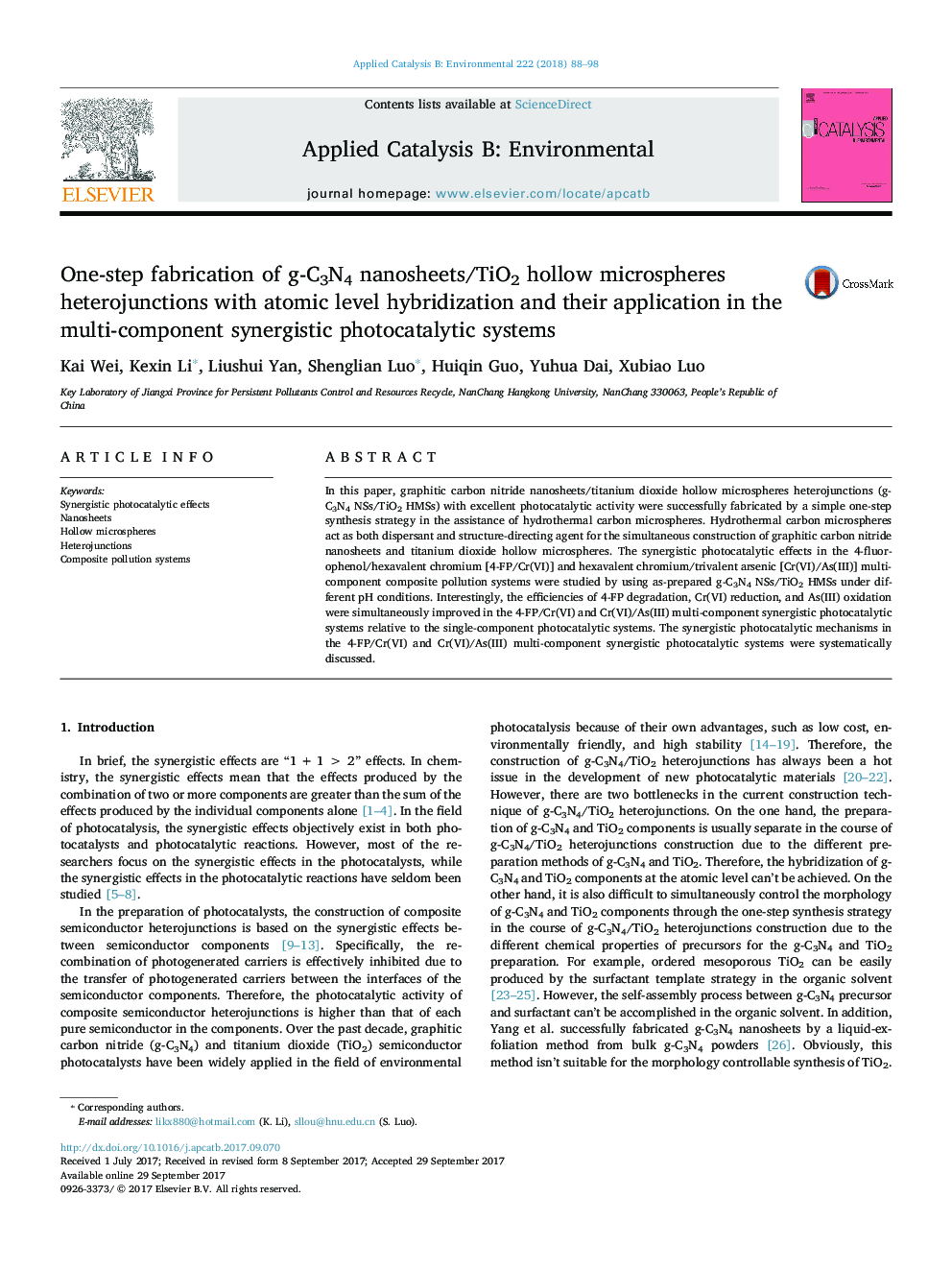| Article ID | Journal | Published Year | Pages | File Type |
|---|---|---|---|---|
| 6453355 | Applied Catalysis B: Environmental | 2018 | 11 Pages |
â¢The g-C3N4 NSs/TiO2 HMSs was successfully fabricated in the assistance of HCMSs.â¢HCMSs act as both dispersant and structure-directing agent in catalyst preparation.â¢Synergistic photocatalytic effects in the composite pollution systems were studied.â¢Total reaction efficiencies are improved in the synergistic photocatalytic systems.â¢Synergistic photocatalytic mechanisms in composite pollution systems were discussed.
In this paper, graphitic carbon nitride nanosheets/titanium dioxide hollow microspheres heterojunctions (g-C3N4 NSs/TiO2 HMSs) with excellent photocatalytic activity were successfully fabricated by a simple one-step synthesis strategy in the assistance of hydrothermal carbon microspheres. Hydrothermal carbon microspheres act as both dispersant and structure-directing agent for the simultaneous construction of graphitic carbon nitride nanosheets and titanium dioxide hollow microspheres. The synergistic photocatalytic effects in the 4-fluorophenol/hexavalent chromium [4-FP/Cr(VI)] and hexavalent chromium/trivalent arsenic [Cr(VI)/As(III)] multi-component composite pollution systems were studied by using as-prepared g-C3N4 NSs/TiO2 HMSs under different pH conditions. Interestingly, the efficiencies of 4-FP degradation, Cr(VI) reduction, and As(III) oxidation were simultaneously improved in the 4-FP/Cr(VI) and Cr(VI)/As(III) multi-component synergistic photocatalytic systems relative to the single-component photocatalytic systems. The synergistic photocatalytic mechanisms in the 4-FP/Cr(VI) and Cr(VI)/As(III) multi-component synergistic photocatalytic systems were systematically discussed.
Graphical abstractDownload high-res image (104KB)Download full-size image
